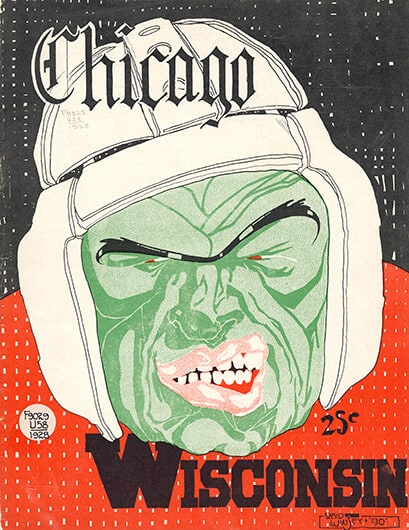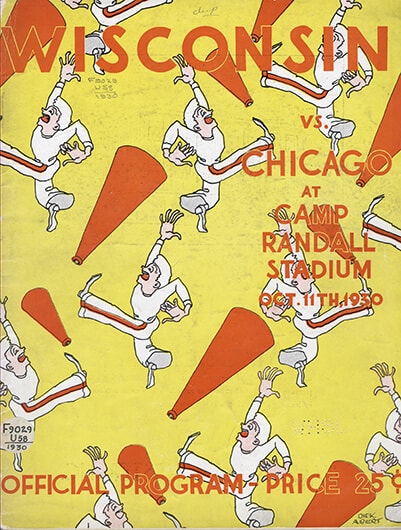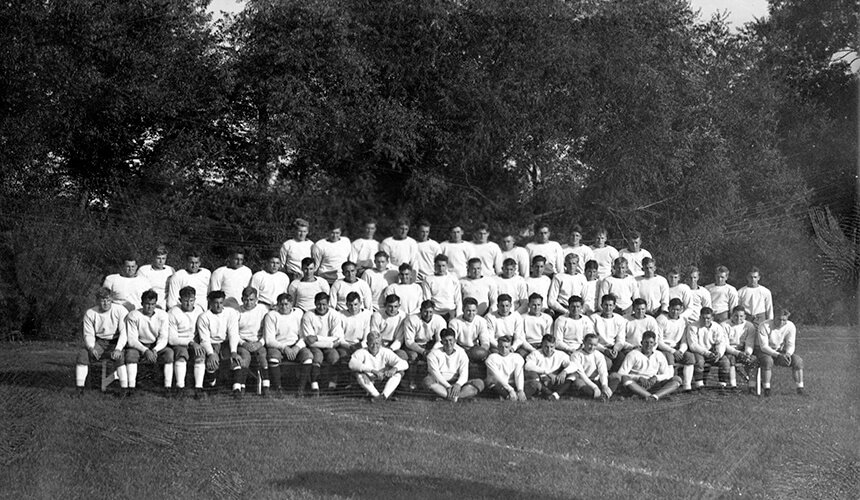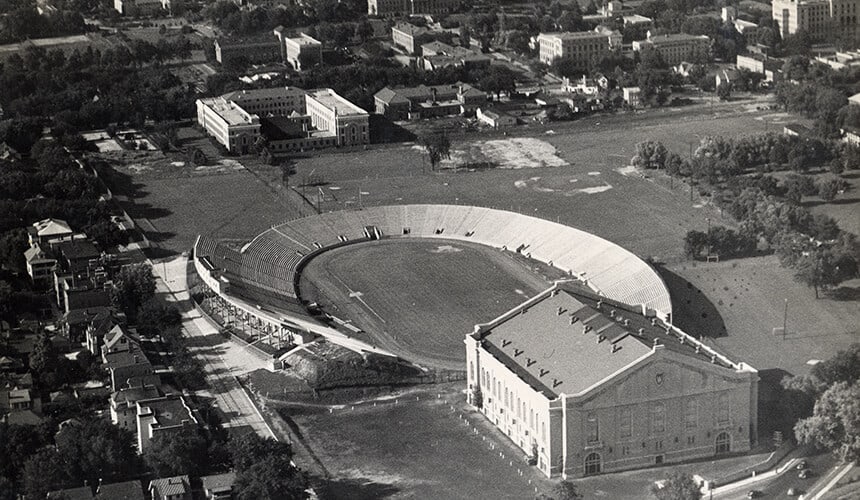Wisconsin vs. Chicago, 1930
Early Badger Football

Image courtesy of the UW Digital Collections Center.
Bright colors and an energetic cheerleader graced the cover of the official program on October 11, 1930, when the Wisconsin Badgers faced the University of Chicago for a Big Ten football game.
Chicago and the Big Ten belonged in the same sentence back then. Representatives from Purdue and the Universities of Chicago, Illinois, Michigan, Minnesota, Northwestern, and Wisconsin had originally gathered at Chicago’s Palmer House in 1895 to formulate policies to regulate intercollegiate athletics. They established what evolved into the Big Ten Conference.
Wisconsin was indeed playing the Chicago Maroons on that day in 1930, heading into the Badgers’ fourth matchup for the season. It was Glenn Thistlethwaite’s fourth season as coach, and it’s likely that he felt a little trepidation as his team took the field. After all, he’d be taking on legendary Amos Alonzo Stagg, who’d been coaching the Maroons since 1892 and who was an innovator in college football. During the course of his career, Stagg had created aspects of the game that are familiar to modern sports fans: the tackling dummy, numbered uniforms, padded goalposts, the huddle, and more.

Image courtesy of the UW Archives, #S06249.
College football faced some major obstacles during the 1930s. Players’ equipment was a far cry from what is worn today; helmets weren’t required until 1939. And between 1929 and 1933, attendance at college games dropped 25 percent while the country struggled with the economic hardship of the Great Depression.
But on that particular day at Camp Randall Stadium, fans handed over a quarter for a copy of the official program and watched the Badgers prevail over Chicago, 34–0. Wisconsin closed out the season with a 6–2–1 record, placing it fourth in the conference behind Michigan, Northwestern, and Purdue. Thistlethwaite could breathe a sigh of relief, congratulate his players, and go on to coach another season.
Of all of the Wisconsin-Chicago matchups, the UW won 19 games, lost 16 and tied five. Badger fans may choose to believe that the Maroons started to get the message. Chicago abolished its football program altogether in 1939 and withdrew from the Big Ten in 1946.
 49° F
49° F

